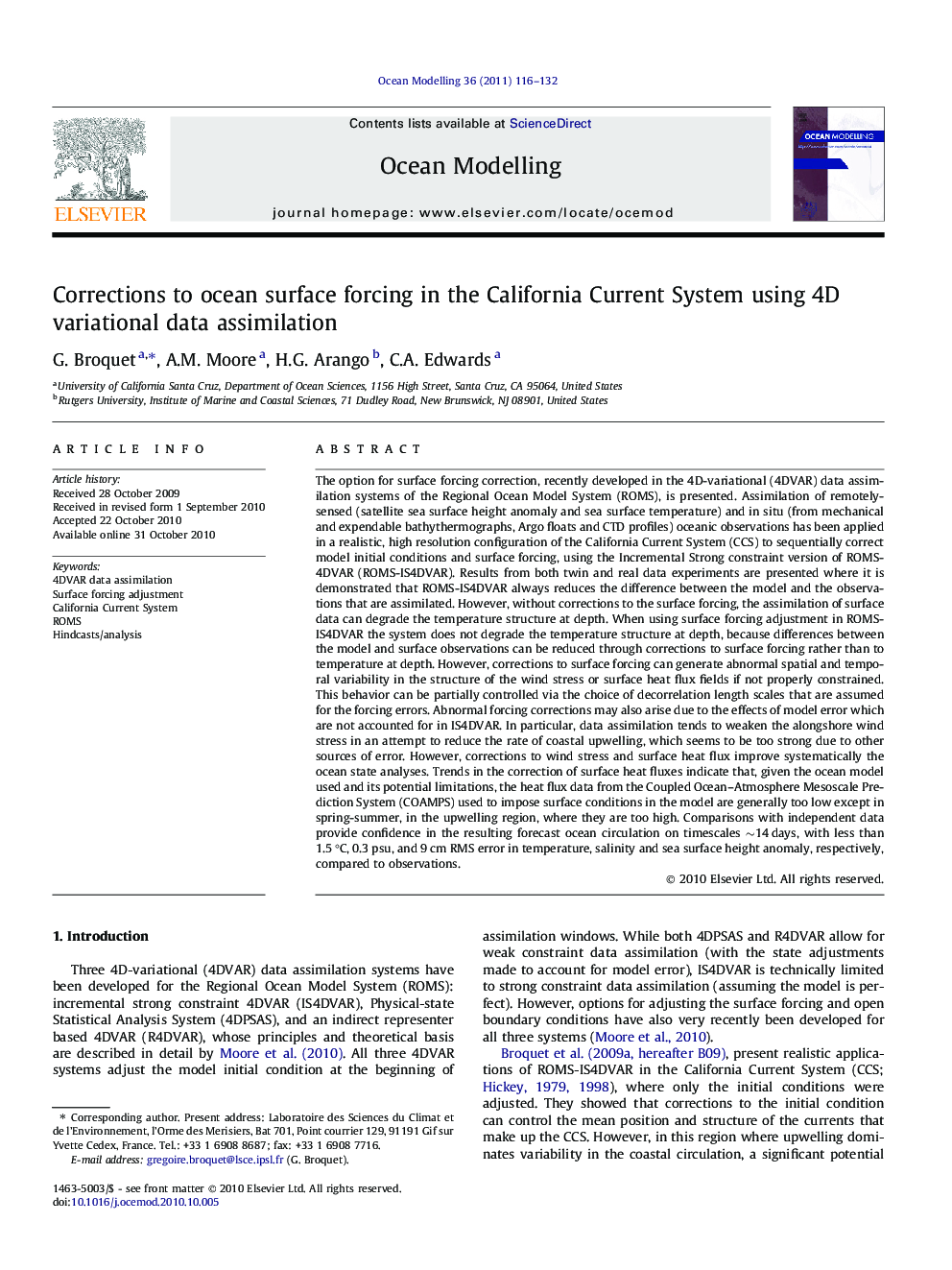| Article ID | Journal | Published Year | Pages | File Type |
|---|---|---|---|---|
| 4552310 | Ocean Modelling | 2011 | 17 Pages |
The option for surface forcing correction, recently developed in the 4D-variational (4DVAR) data assimilation systems of the Regional Ocean Model System (ROMS), is presented. Assimilation of remotely-sensed (satellite sea surface height anomaly and sea surface temperature) and in situ (from mechanical and expendable bathythermographs, Argo floats and CTD profiles) oceanic observations has been applied in a realistic, high resolution configuration of the California Current System (CCS) to sequentially correct model initial conditions and surface forcing, using the Incremental Strong constraint version of ROMS-4DVAR (ROMS-IS4DVAR). Results from both twin and real data experiments are presented where it is demonstrated that ROMS-IS4DVAR always reduces the difference between the model and the observations that are assimilated. However, without corrections to the surface forcing, the assimilation of surface data can degrade the temperature structure at depth. When using surface forcing adjustment in ROMS-IS4DVAR the system does not degrade the temperature structure at depth, because differences between the model and surface observations can be reduced through corrections to surface forcing rather than to temperature at depth. However, corrections to surface forcing can generate abnormal spatial and temporal variability in the structure of the wind stress or surface heat flux fields if not properly constrained. This behavior can be partially controlled via the choice of decorrelation length scales that are assumed for the forcing errors. Abnormal forcing corrections may also arise due to the effects of model error which are not accounted for in IS4DVAR. In particular, data assimilation tends to weaken the alongshore wind stress in an attempt to reduce the rate of coastal upwelling, which seems to be too strong due to other sources of error. However, corrections to wind stress and surface heat flux improve systematically the ocean state analyses. Trends in the correction of surface heat fluxes indicate that, given the ocean model used and its potential limitations, the heat flux data from the Coupled Ocean–Atmosphere Mesoscale Prediction System (COAMPS) used to impose surface conditions in the model are generally too low except in spring-summer, in the upwelling region, where they are too high. Comparisons with independent data provide confidence in the resulting forecast ocean circulation on timescales ∼14 days, with less than 1.5 °C, 0.3 psu, and 9 cm RMS error in temperature, salinity and sea surface height anomaly, respectively, compared to observations.
Research highlights► 4DVAR data assimilation is used to adjust ocean surface forcing and initial state. ► SSH, SST, and in situ data are assimilated in the California Current System. ► Corrections to surface forcing are needed to reduce subsurface temperature errors. ► Corrections to surface forcing improve systematically the ocean state analyses. ► Abnormal corrections to surface forcing may arise due to the effects of model error.
